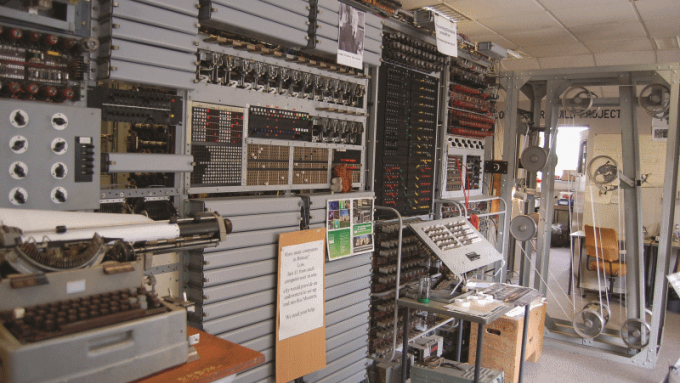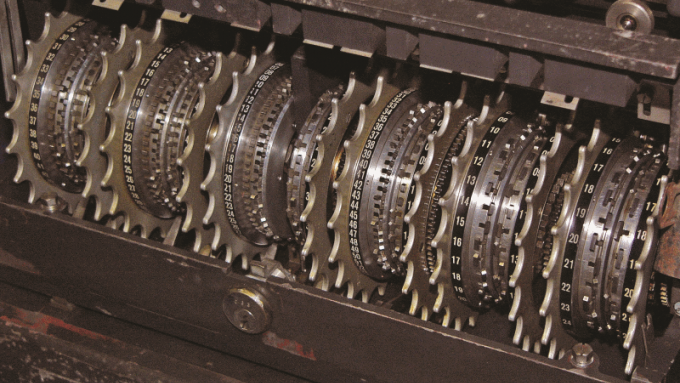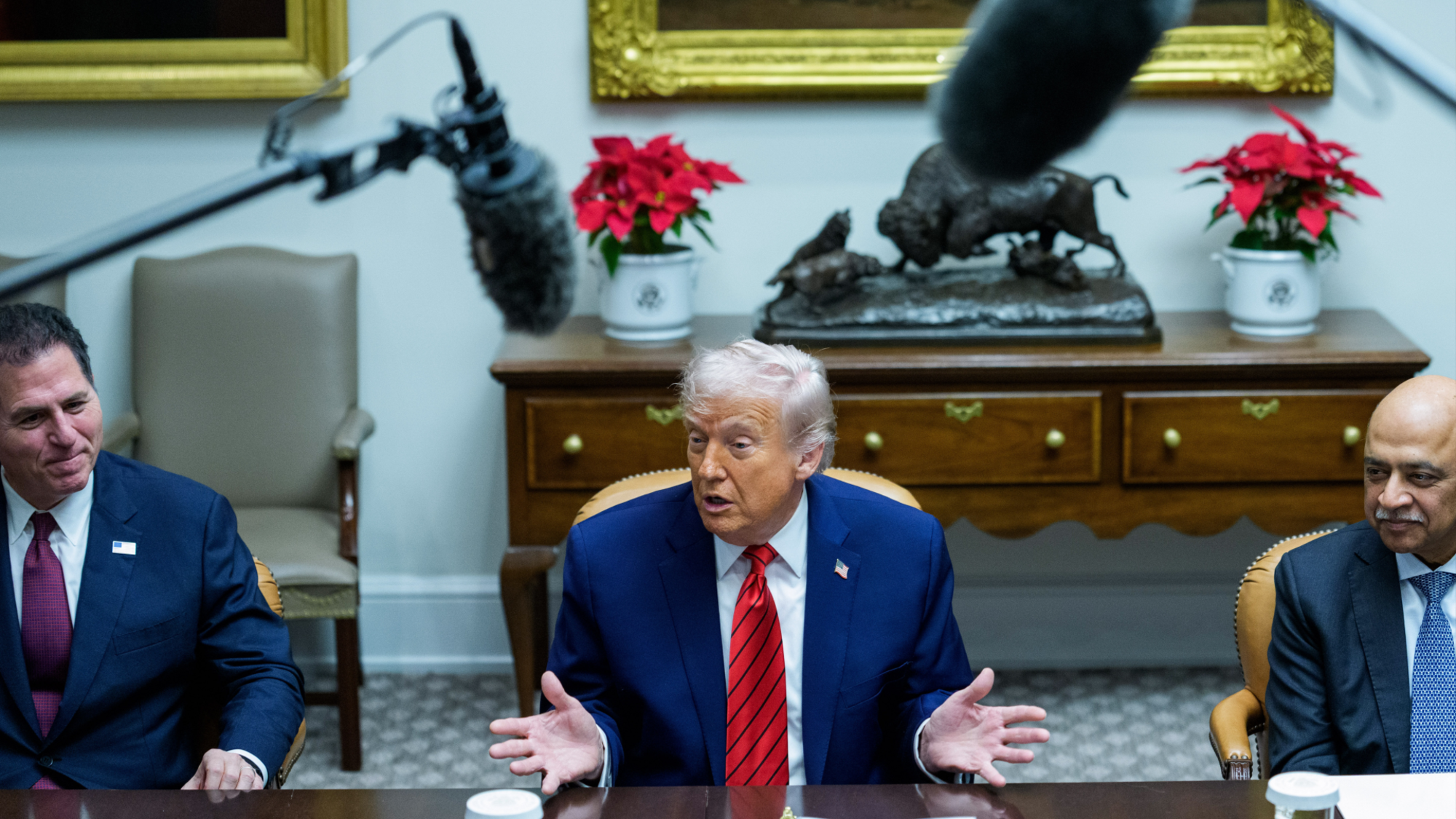Top inventions and technical innovations of World War 2
Much of the technology we take for granted today was developed in the Second World War and helped shape the world today

2. Nuclear power
The potential power stored within the Atom had been known for a long time, but it was during WWII that the race to harness its power really began. The US got there first with the Manhattan Project, which developed the first Atom bomb in history. On August 6th 1945 the bomb was dropped on Hiroshima, then on August 9th 1945 a second bomb was dropped on Nagasaki. It's estimated that between 150,000 and 244,000 people were killed as a direct result.
There's been a lot of controversy surrounding these events and the proliferation of nuclear weapons since. However, without this discovery there would be no nuclear power, which has largely remained a safe and, arguably, comparatively clean way of generating electricity.

^ The mushroom cloud over Nagaskai following the dropping of the second atomic bomb
The Week
Escape your echo chamber. Get the facts behind the news, plus analysis from multiple perspectives.

Sign up for The Week's Free Newsletters
From our morning news briefing to a weekly Good News Newsletter, get the best of The Week delivered directly to your inbox.
From our morning news briefing to a weekly Good News Newsletter, get the best of The Week delivered directly to your inbox.
1. The first computer - Colossus
With the Germans encrypting practically every message, Bletchley Park was put into operation to decode them and give the Allies a massive advantage. In the process, the incredible team that worked there, created the world's first computer.
The main focus of Bletchley Park was breaking the code generated by the German Enigma machine; which involved creating another mechanical machine, known as the Bombe. However, the cryptologists were also tasked with breaking the far-harder Lorenz cipher, whose traffic was known as Tunny. This was created by Lorenz machines, which were far larger, and therefore not portable, but much more complex than Enigma. As this traffic was used by the German High Command, the messages encrypted were incredibly important. Lorenz machines were closer to modern encryption than the substitution-cypher-based Enigma.

^ Bletchley Park broke the German encryption and ended up being home of the first computer
They were teleprinters that output messages not as text, but with each character composed in five-bit baudot code. To encrypt the data, the Lorenz machine generated five pseudorandom bits, which were eXclusive ORed (XORed) with the plaintext. This operation looks at pairs of bits, and outputs a 1 if only one of the characters is a 1, otherwise the output is 0. So 1 XOR 0 = 1, but 1 XOR 1 = 0. Each character output in the Lorenz machine would be XORed with the pseudorandom bits, such as: 10010 XOR 11001 = 01011. The important thing about XOR operations is that XORing the output with the pseudorandom bits reverses the encryption, so, 01011 XOR 11001 = 10010. The same principles apply in modern cryptology, and the use of binary is exactly how modern computers work.
A free daily email with the biggest news stories of the day – and the best features from TheWeek.com
The Lorenz machine generated its pseudorandom bits through a set of ten pinwheels, where the encryption key was determined by the starting position of the wheels. There were five pinwheels which stepped regularly (chi) and five which stepped irregularly (psi). The irregular stepping of the psi wheels was controlled by two extra wheels, called the motor wheels. The Lorenz machine actually double-encrypted the data, first generating a five-bit pseudorandom code for the chi wheels, then generating a second five-bit pseudorandom code for the psi wheels. However, the order in which these are applied, both in encrypting and decrypting, are not important.
Statistical attack and Colossus
W. T. (Bill) Tutte working at Bletchley Park discovered how to break Lorenz using statistical methods to break both parts of the key: the pin settings for the wheels (known as wheel breaking) and the wheel setting (the starting positions of each wheels). The wheel breaking was often done by hand, using Tutte's rectangling method, which involved writing down the bits of message in a rectangle, then statistically analysing the results for patterns that gave away the pin positioning.
Once this had been worked out, the starting positions of the wheels could be worked out. Tutte worked out was that the psi wheels were a weak point in the encryption, as they moved irregularly. Therefore, the output from these wheels was the same for many characters. As such, the important thing was to start with the regularly stepping chi wheels.

^ Colossus was the first computer ever built and currently has a working replica at Bletchley Park
Tutte also worked out that you could work on pin wheels in pairs. So, while there were 22 million possible wheel start positions, there were just 1,271 possible starting combinations for the first chi wheels. Due to the way the system worked, guessing the first two chi wheels would remove the first two encrypted bits throughout the entire message. It was then possible using the partially decrypted code to statistically analyse the result looking for patterns in the language, such as where a character is repeated twice in a row, such as in the English word, look, which has 'o' repeated twice. Similar rules apply for German, too.
From there, assuming the first two wheels are set correctly, there were only 598 combinations of starting positions for the last two wheels. Once they were set, this left just 29 positions for the third wheel, meaning that only 1,898 starting combinations were needed to break the chi wheels. Once this was complete breaking the Psi wheels was considerably easier.
The only problem now was to automate the problem, which is where Max Newman came in, as he believed it was possible to build a machine to automatically perform some of the calculations. The initial machines, named Heath Robinson, proved unreliable but were a good starting point for Tommy Flowers, who decided you can build an electronic machine for reading cipher text, performing the necessary calculations and outputting the results on a printer. In other words, the first computer - Colossus.

^ Traffic of the Lorenz machine was harder to decode than that of the Enigma machines
Initially its job was to optically read in ciphertext characters, and count repeated characters on them for all of the combinations of the chi wheels, based on its programmed wheel settings, outputting the results to a printer. The lines with the highest counts above a set statistical value where the most likely chi wheel settings. These were passed onto to a team that would break the easier psi values by hand and check the chi settings manually, decoding messages on a replica Tunny machine.
Operating at 5,000 characters per second, Colossus was capable of working out the chi settings in less than 30 minutes. However, it was also discovered that Colossus could be programmed for wheel breaking, massively reducing the time that this took. This is a key development, as Colossus could be programmed, evolving the job that it could do to match the situation.
Sadly, after the war Colossus was broken down and kept a secret, so details of how it worked was not widely known. As such, it had little impact on the development of computers and modern computers are evolved from subsequent projects. However, the idea of Colossus helped everything. Once this computer had been built, it was known that a high-speed electronic computer could be made reliably. It was this information that helped push the development of subsequent computers, so the importance of Colossus on the modern world should not be overlooked.
-
 What role will Trump play in the battle over Warner Bros. Discovery?
What role will Trump play in the battle over Warner Bros. Discovery?Today’s Big Question Netflix and Paramount fight for the president’s approval
-
 ‘The menu’s other highlights smack of the surreal’
‘The menu’s other highlights smack of the surreal’Instant Opinion Opinion, comment and editorials of the day
-
 Education: More Americans say college isn’t worth it
Education: More Americans say college isn’t worth itfeature College is costly and job prospects are vanishing